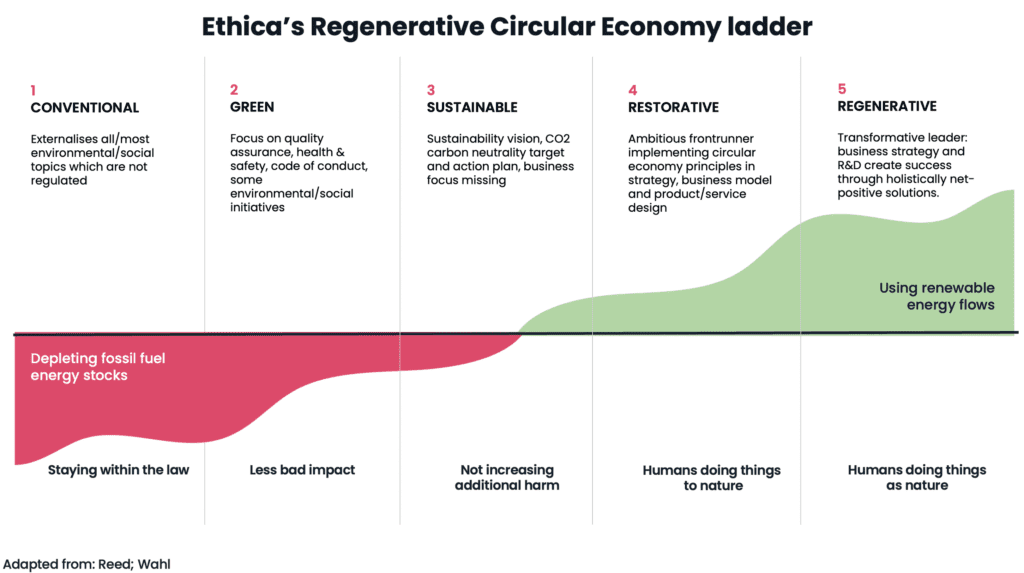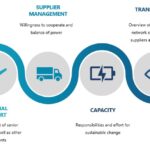
In the face of climate change, environmental degradation, and resource depletion, traditional economic models centered on extraction and consumption are no longer viable. As society grapples with these issues, new economic models—specifically regenerative and green economies—have emerged as pivotal frameworks for achieving long-term sustainability. Both models aim to harmonize economic growth with ecological health, but they approach this goal in slightly different ways.
Understanding Regenerative Economy
The regenerative economy is an economic system designed to restore and replenish ecosystems and communities rather than merely sustaining them. It is inspired by natural cycles, where waste is repurposed as input for new processes, creating a circular system of value. The key principle behind a regenerative economy is not just to minimize harm, but to actively contribute to the renewal of ecosystems, enhance biodiversity, and improve human well-being.
Key Principles of the Regenerative Economy:
- Restorative Practices: A regenerative economy aims to restore natural and social systems. It focuses on activities that repair environmental damage, such as reforestation, soil regeneration, and the restoration of water systems. For businesses, this means adopting production methods that are resource-positive—giving more back to the planet than they take.
- Circular Design: A regenerative economy embraces the concept of circularity, where products and services are designed for reuse, refurbishment, and recycling. The goal is to eliminate waste entirely by ensuring that materials flow in closed loops, mimicking natural ecosystems.
- Holistic Value: It emphasizes long-term value creation that benefits people, the planet, and the economy. This requires shifting from short-term profit maximization to investments in community health, natural capital, and social equity.
- Decentralization and Localism: Regenerative economies often emphasize local supply chains and economies to reduce dependence on global resources and create more resilient, self-sufficient communities.
- Collaboration and Partnership: Moving towards a regenerative economy requires collaborative efforts between governments, businesses, communities, and individuals. It encourages cross-sector partnerships and open innovation to address complex, systemic challenges.
The Green Economy: Sustainability at the Core
The green economy, while similar in goals, focuses primarily on sustainability and environmental responsibility in economic activities. It aims to reduce environmental risks, limit ecological scarcities, and promote energy efficiency and resource conservation, all while driving economic growth. The green economy is often linked with green technologies, renewable energy, and carbon reduction strategies.
Key Pillars of the Green Economy:
- Low-Carbon Solutions: Central to the green economy is the reduction of greenhouse gas emissions. This is achieved by shifting from fossil fuels to renewable energy sources such as solar, wind, and hydropower, and promoting energy efficiency across all sectors.
- Sustainable Resource Management: The green economy emphasizes the sustainable management of natural resources. This involves reducing water and energy use, curbing deforestation, and protecting biodiversity, all while ensuring the availability of resources for future generations.
- Eco-Friendly Innovation: Green economy advocates prioritize technological innovations that minimize environmental impact. For example, green technologies such as electric vehicles, sustainable agriculture techniques, and waste-to-energy systems help reduce ecological footprints.
- Green Jobs: As economies transition to more sustainable practices, new job opportunities are created in sectors like renewable energy, energy efficiency, waste management, and sustainable agriculture. These “green jobs” not only contribute to environmental protection but also provide socially inclusive employment opportunities.
- Circular Economy Integration: Like the regenerative model, the green economy often incorporates circular economic principles, focusing on reducing waste through recycling and the responsible use of resources. However, its primary focus remains on sustainable management rather than active regeneration.
Commonalities and Differences
Both regenerative and green economies aim to mitigate the adverse impacts of human activity on the environment. However, the regenerative economy goes a step further by seeking to restore and renew ecosystems, rather than merely reducing the harm caused.
- Restoration vs. Sustainability: While the green economy seeks to maintain environmental balance through sustainable practices, the regenerative economy seeks to actively restore damaged systems.
- Scope: The green economy often focuses on industries and technologies that minimize harm, whereas the regenerative economy takes a more holistic approach that includes community well-being, biodiversity, and a focus on social equity.
- Economic Models: The green economy may still operate within the confines of traditional market economies, albeit with sustainability goals. The regenerative economy, on the other hand, challenges the underlying extractive principles of modern economies, advocating for systemic change and localized, self-sustaining systems.
The Path Forward
As we look to the future, the adoption of regenerative and green economy models is essential for addressing pressing global challenges like climate change, biodiversity loss, and inequality. Policymakers, businesses, and consumers will need to collaborate to shift towards more sustainable and restorative practices.
Governments can create incentives for businesses to adopt sustainable and regenerative practices, such as offering tax breaks for companies that implement green technologies or regenerative agricultural methods. On the corporate side, businesses must move beyond corporate social responsibility (CSR) and embed regenerative principles into their core strategies. Consumers, too, can drive change by supporting companies that prioritize sustainability and regeneration in their products and services.
In conclusion, while the green economy promotes sustainability and eco-friendly practices, the regenerative economy seeks to go further, envisioning a future where human activity not only coexists with natural systems but actively contributes to their flourishing. Together, these models offer a blueprint for a future that balances economic prosperity with environmental stewardship, ensuring that both nature and society thrive for generations to come.

